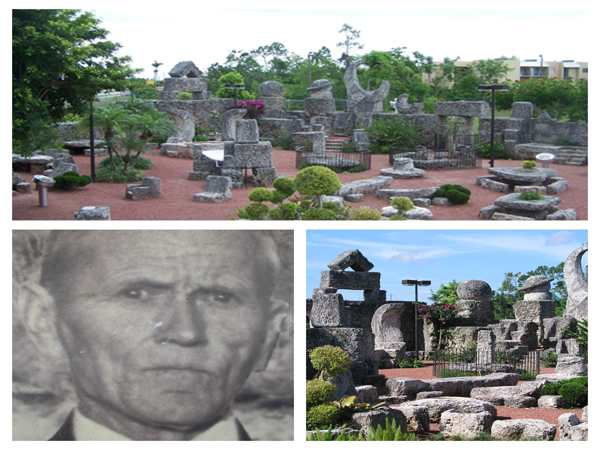Coral Castle: Did a Latvian Immigrant Unlock Ancient Secrets?
Coral Castle in Homestead, Florida, stands as one of the most intriguing architectural feats of the 20th century. Often compared to the wonders of Stonehenge and the Great Pyramids of Egypt, Coral Castle was single-handedly built by Edward Leedskalnin, a diminutive Latvian immigrant. Standing just 5 feet tall and weighing only 100 pounds, Leedskalnin accomplished what seems like a miraculous feat: he quarried, transported, and constructed massive coral blocks, some weighing up to 30 tons, without any modern machinery.
A Monument Born from Heartache
Leedskalnin’s journey to building Coral Castle began with heartbreak. In 1920, after being jilted by his fiancée who deemed him too old and too poor, Leedskalnin moved to Florida for health reasons, having been diagnosed with tuberculosis. He settled in Florida City and began constructing his coral rock home, which he originally called “Rock Gate Park.” When a planned subdivision threatened his privacy in 1936, Leedskalnin relocated his entire creation 10 miles to Homestead, where he continued his work until his death in 1951.
The Construction Marvel
Coral Castle comprises over 1,000 tons of coral rock, fashioned into walls, towers, and intricate pieces of furniture and art. Among the most notable structures are:
- An obelisk weighing 28 tons.
- An 8-foot-tall wall made of large coral blocks.
- Stone crescents perched atop 20-foot-high walls.
- A 9-ton gate that swings with the touch of a finger.
- The largest rock on the property, weighing an estimated 35 tons.
Leedskalnin’s ability to move and manipulate these massive stones remains a mystery. Despite numerous eyewitness accounts of seeing the blocks being transported, no one ever witnessed how he moved them onto and off the vehicles. His nocturnal work habits and secretive nature only deepened the enigma.
Theories and Speculations
Various theories have emerged to explain Leedskalnin’s methods, ranging from the plausible to the fantastical. Some speculate that he discovered ancient anti-gravity techniques or tapped into Earth’s magnetic fields. Others propose more mundane explanations involving levers and pulleys.
The Singing Stones
One of the more curious theories suggests that Leedskalnin could levitate the stones by placing his hands on them and singing. Neighbors reportedly saw him “float coral blocks through the air like hydrogen balloons,” but such accounts are largely dismissed as fanciful.
Earth Energy Grid
Frank Joseph, writing for Fate magazine, proposed that Leedskalnin utilized the “world grid,” an invisible network of energy lines crisscrossing the Earth. These telluric power points supposedly allowed him to move the massive stones using the planet’s natural energies. However, this theory fails to explain how he accessed and harnessed these energies.
Magnetic Manipulation
In his article for Atlantis Rising, Christopher Dunn suggested that Leedskalnin might have manipulated the alignment of magnetic elements within the coral blocks. By adjusting these elements to interact with the Earth’s magnetic field, he could have theoretically moved the stones with ease. This theory, while intriguing, remains speculative and lacks concrete evidence.
Leedskalnin’s Own Words
When asked about his methods, Leedskalnin offered cryptic explanations, claiming to understand the secrets of the pyramids and the laws of weight and leverage. He dismissed modern scientific principles, asserting that nature is simple and that all matter consists of individual magnets. Leedskalnin believed the movement of these magnets produced phenomena such as magnetism and electricity, concepts aligning with the idea of chi or life force.
The Legacy of Coral Castle
Despite the many theories, no definitive explanation has emerged to demystify Leedskalnin’s accomplishment. He took his secrets to the grave, leaving behind a structure that continues to fascinate and perplex visitors and researchers alike. Coral Castle remains a testament to one man’s ingenuity and determination, an enduring mystery that challenges our understanding of ancient building techniques and the limits of human capability.
Conclusion
Edward Leedskalnin’s Coral Castle stands as a monument to mystery and human potential. Whether he unlocked ancient secrets or simply employed clever engineering, his achievement remains unparalleled. Coral Castle invites us to ponder the possibilities of lost knowledge and the enduring power of human ingenuity.

